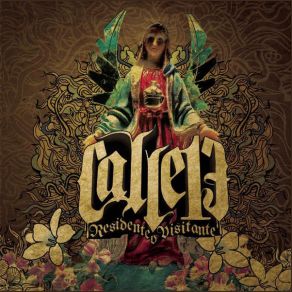Residente o Vísitante / Residente o Visitante
Download links and information about Residente o Vísitante / Residente o Visitante by Calle 13. This album was released in 2004 and it belongs to Hip Hop/R&B, Rap, Alternative Rock, Latin genres. It contains 14 tracks with total duration of 01:00:29 minutes.

|
|
|---|---|
| Artist: | Calle 13 |
| Release date: | 2004 |
| Genre: | Hip Hop/R&B, Rap, Alternative Rock, Latin |
| Tracks: | 14 |
| Duration: | 01:00:29 |
| Buy it NOW at: | |
| Buy on iTunes $9.99 | |
| Buy on iTunes $9.99 | |
| Buy on Amazon $9.99 | |
| Buy on Songswave €2.62 | |
| Buy on Songswave €1.88 | |
| Buy on Songswave €2.62 | |
Tracks
[Edit]| No. | Title | Length |
|---|---|---|
| 1. | Tango del Pecado | 4:13 |
| 2. | La Fokin Moda | 3:26 |
| 3. | Sin Exagerar | 3:26 |
| 4. | Mala Suerta Con el 13 | 4:30 |
| 5. | Llégale a Mi Guarida | 4:24 |
| 6. | Un Beso de Desayuno | 4:50 |
| 7. | Uiyi Guaye | 5:05 |
| 8. | Algo Con-Sentido | 4:40 |
| 9. | Pal Norte | 4:40 |
| 10. | La Cumbia de los Aburridos | 4:06 |
| 11. | A Limpiar el Sucio | 4:13 |
| 12. | El Avíón Se Cae | 4:18 |
| 13. | La Crema | 4:01 |
| 14. | La Era de la Copiaera | 4:37 |
Details
[Edit]Around the time the reggaeton gold rush of 2003-2005 was running dry, and a great many critics were eager to write off the style as a next-big-thing phenomenon that burned itself out, along came Calle 13. The Puerto Rican duo was a revelation: a reggaeton act whose appeal extended beyond clubs and mixtapes, one whose music was as engaging intellectually as it was sonically. Granted, Calle 13 was a reggaeton act that wasn't genuinely reggaeton. These guys were presenting an alternative style, one that was purposefully different — when so many other reggaeton acts were parroting the mannerisms of Daddy Yankee and Don Omar in hopes of cashing in on the gold rush, Calle 13 blazed a trail of their own. They didn't catch on at first, but once they did, slowly but steadily, they were showered with acclaim, including three Latin Grammys, and they enjoyed surging popularity, especially among the MTV demographic. All of this success opened a lot of doors for the duo, as Residente (the vocalist) accepted invitations to work with Nelly Furtado and Alejandro Sanz and Visitante (the producer) with Shakira and Beyoncé on their "Beautiful Liar" collaboration — not bad for a reggaeton act. The thing is, Calle 13 is so much more than a reggaeton act, something they seem to stress on their second album, Residente o Visitante. Sure, reggaeton is the basis for the music of Residente and Visitante, but they synthesize it with a wide-ranging assortment of styles and sounds, including opera ("Intro"), tango ("Tango del Pecado"), bossa nova ("Un Beso de Desayuno"), electric guitar ("Llégale a Mi Guarida"), and cumbia ("La Cumbia de los Aburridos"). More than anything, though, rap and electronica are clear touchstones for Calle 13, as Residente is a gifted rapper who matches Eminem in terms of wit and playfulness while Visitante is a similarly gifted producer who creates multi-layered tracks that rarely sound alike. As expected, Residente o Visitante is a significantly more advanced album than Calle 13, given all that happened in the time between. For one, the guys are much more willing to experiment stylistically. The handful of collaborations — true collaborations, not phoned-in vocal tracks — seem to have been a vehicle for experimentation: the lead single, "Tango del Pecado," is a clever narrative graced instrumentally by the Bajofondo Tango Club; "Sin Exagerar" is a crazed runaway rap showcase teaming Residente with his labelmate Tego Calderón; "Mala Suerta con el 13" is an impressive boy-versus-girl face-off with rapper Mala Rodríguez; and "Pal Norte" features Cuban rappers Orishas. These aren't necessarily the best songs. They just happen to be the most interesting, because of the experimentation — and they're front-loaded, kicking off Residente o Visitante wildly. As the album nears its 15-track close, it's just Residente and Visitante, the mood turns darker, and the style turns increasingly away from reggaeton and toward a more general urban-alternative style. "A Limpiar el Sucio," in particular, is powerful, while "La Era de la Copiaera," the derisive final song, whose title translates to "The Age of the Copier," closes the album fittingly. [A clean edition of Residente o Visitante was issued without the first track, "Intro."]